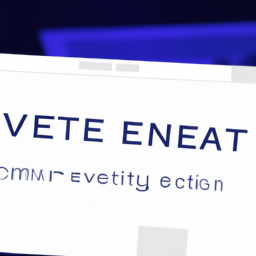How to Easily Create an Event Website in Just a Few Simple Steps
Table of Contents []
- Create An Event Website
- Step One: Set the Stage With an Engaging Introduction
- Step Two: Identify 8-12 Primary Threads
- Step Three: Elaborate on the Threads & Embed HTML Markers
- for main titles and for subtitles. Include links where necessary to direct visitors to the appropriate page and incorporate visuals or graphs to add clarity.
- Step Four: Prioritize Clear Content Presentation
- tag and two paragraphs for each tag.
- Step Five: Wind Up with a Summarizing Statement
- Step Six: Get Feedback & Make Adjustments
- Step Seven: Make the Project Live
- Step Eight: Promote & Manage Your Website
- and for titling and subtitles. Prioritize clear content presentation by eliminating redundant breaks or empty tags and wind up with a What to Expect Next' overview. After receiving feedback and making adjustments, make the website live and promote the event to connect with potential attendees.
Create An Event Website
When it comes to creating an engaging event website, the goal is to capture attendees' attention and provide them with pertinent information. While there are a variety of design and programming features to consider, the most important aspects are creating a holistic introductory framework, including approximately 8-12 primary threads, and ensuring the website content is presented in an organized and intuitive manner. Here's an eight-step guideline for setting up an event website.
Step One: Set the Stage With an Engaging Introduction
Start by introducing the event and its focal goals to attract attendees to your endeavor. Mention the timeframe of the event, its venue, and any necessary background information. Get creative with visuals like videos to make your page pop and provide an engaging introduction that provides a holistic overview for visitors.
Step Two: Identify 8-12 Primary Threads
Identify 8-12 key topics you want to emphasize on your website. These could include speakers, entertainment, agenda, sponsors and partners, FAQs, registration, volunteer opportunities, directions and lodging, and social media accounts. Brainstorm a list of categories that visitors would want to learn more about and can engage with.
Step Three: Elaborate on the Threads & Embed HTML Markers
Create a section for each thread and lightly elaborate on its purpose. Embed basic HTML markers like
for main titles and for subtitles. Include links where necessary to direct visitors to the appropriate page and incorporate visuals or graphs to add clarity.
Step Four: Prioritize Clear Content Presentation
Ensure all tags and content are presented in an organized and intuitive fashion. Break up lengthy paragraphs and prioritize clear presentation by eliminating redundant breaks or empty tags. Include at least three paragraphs for each
tag and two paragraphs for each tag.
Step Five: Wind Up with a Summarizing Statement
Following the content, wrap up with a summarizing statement or a What to Expect Next' section to let visitors know what's going on and what's next.
Step Six: Get Feedback & Make Adjustments
Before making the website live, get feedback from peers or other industry professionals to accrue quality feedback. Make adjustments accordingly and ensure the website is user-friendly and provides visitors with essential information.
Step Seven: Make the Project Live
After all the necessary steps are complete, it's time to make the website live and let attendees take a look at what's in store. As you continue to receive feedback or notice user experience issues, immediately make the necessary adjustments to maintain the website's integrity.
Step Eight: Promote & Manage Your Website
Once the website's live, the real work begins. Manage the website and promote the event in order to interact with potential attendees. Create social media accounts or engage in ad campaigns to direct more visitors to the site.
In Summary
When it comes to setting up an event website, create an introduction to provide a holistic overview for visitors. Identify 8-12 primary threads and lightly elaborate on each while also embedding HTML markers like
and for titling and subtitles. Prioritize clear content presentation by eliminating redundant breaks or empty tags and wind up with a What to Expect Next' overview. After receiving feedback and making adjustments, make the website live and promote the event to connect with potential attendees.

